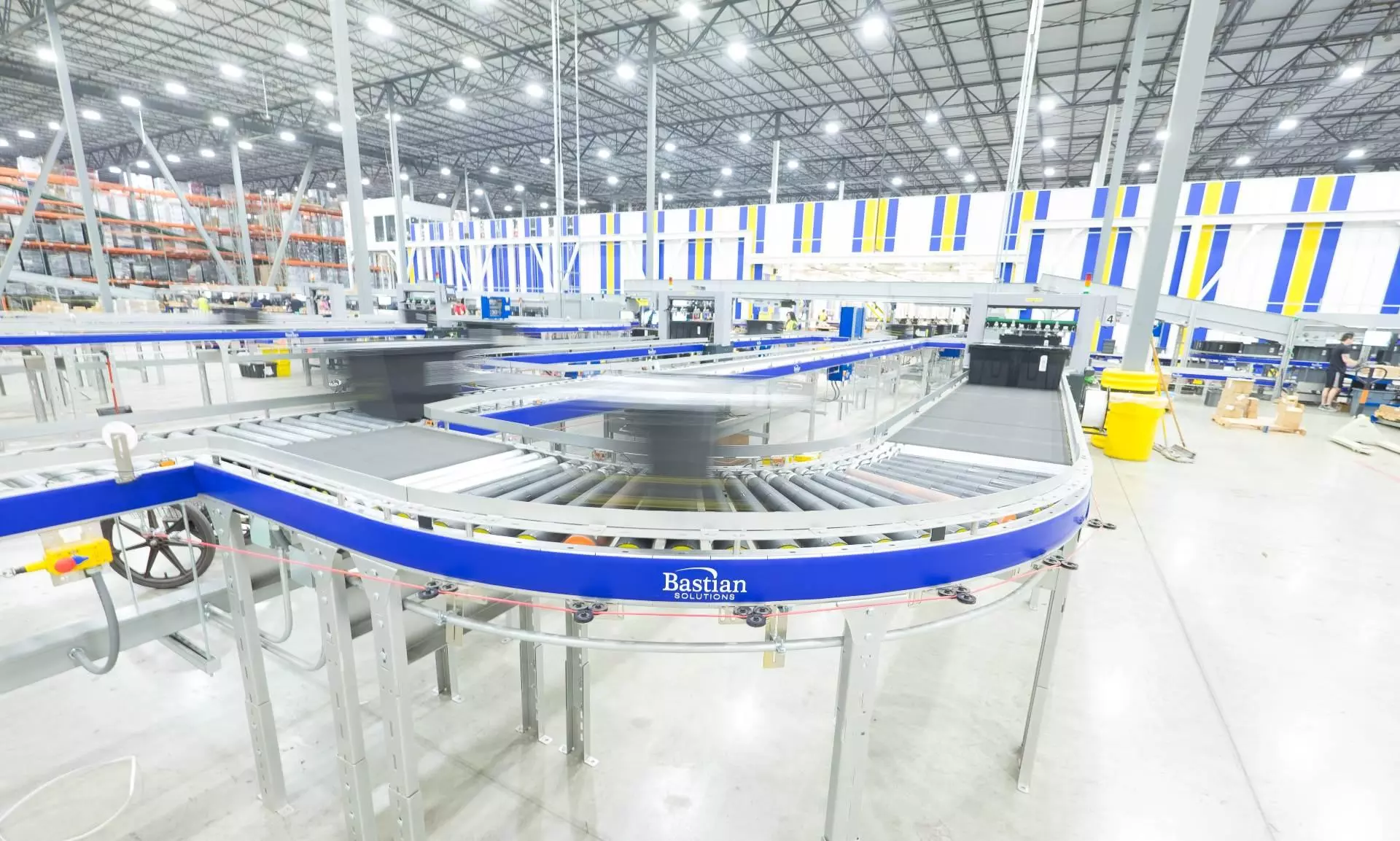Ideal warehousing automation strategy for retailers

The Indian retail market holds enormous growth potential due to increasing consumer activity. The adoption of automation in retail warehousing can help give companies a competitive edge through improved overall efficiency and ability to more effectively meet consumer needs.
In recent years, retail companies have been focusing on achieving the fastest last-mile delivery to keep pace with the continuously changing consumer demands. Automation can offer a multitude of benefits for retailers by streamlining warehousing processes such as order picking, sorting and inventory management thus reducing human errors, ensuring stock levels are aligned with market demand and accelerating operations. This efficiency ultimately translates into faster order fulfilment, which is a critical factor in meeting the expectations of India's growing e-commerce market.
Embracing advanced automation technologies can offer lightning-fast delivery, greater accuracy, and superior customer service, giving retailers a competitive edge in India's cut-throat market where consumers expect nothing less. Scalability and data insights further round out the advantages, enabling retailers to adapt to changing demand patterns and make data-driven decisions.
Potential challenges for retail warehouses
Manual workforce Intensity: Traditionally, retail companies used to heavily rely on humans to manage warehouse operations. Without material handling technologies such as conveyor systems, automated picking robots or forklifts, tasks like picking, packing and transporting goods would otherwise need to be performed manually. Without automation, these manual steps could result in high labour costs, an increased risk of injuries and slower order fulfilment times for retail companies.
Inefficient Space Utilization: Retail companies, with their extensive range of SKUs (various products and product types) often necessitate ample storage space for their diverse products. Consequently, retail warehouses lacking advanced material handling systems may encounter challenges in efficiently optimizing their storage capacities. This can lead to inventory mismanagement, wasted floor space and difficulties in locating and accessing products when needed.
Slow Order Fulfilment: Manual processes, as well as the absence of proper inventory storage and management, frequently results in slower order fulfilment processes, potentially leading to a negative impact on customer satisfaction. In the absence of automated systems to streamline order processing, meeting customer expectations for swift and precise last-mile deliveries becomes a challenging task.
Limited Scalability: Relying solely on manual labour, retail companies may encounter challenges when attempting to scale up their operations to meet rising demand. They might also find it challenging to adapt to seasonal fluctuations or sudden spikes in orders, especially in the absence of the efficiency gains provided by material handling technologies.
Optimizing a retail warehouse space
Designing an effective warehouse layout is a highly crucial process, with several key factors that are critical for optimizing space utilization and streamlining workflow. Paramount among these factors is SKU management, which entails categorizing inventory based on size, demand and access frequency, and deploying storage systems that align with the nature of the goods. Additionally, the consideration of aisle widths is another vital factor, as it serves to both maximize storage density and facilitate the smooth movement of forklifts and equipment within the storage racks.
Efficiency in a warehouse layout is only achieved when receiving and shipping areas are meticulously planned and automated to minimize congestion and facilitate the seamless movement of goods. Furthermore, well-designed pick paths, aimed at reducing travel time for order pickers and grouping similar items, are of utmost importance. Ensuring a logical traffic flow within the warehouse and providing clear signage and markings further contribute to efficiency and safety.
Finally, warehouse layout should have the adaptability for future growth and should incorporate inputs from the workforce, who possess valuable insights into peak season, SKU stocking issue or workflow operations.
Emerging trends to shape warehousing improvement strategies for retailers
There are several warehouse automation and material handling technologies that can revolutionize the retail warehouse operations. These trends are driven by the need for increased efficiency, speed in last-mile delivery and adaptability in modern supply chain operations. Some of the key trends include:
Autonomous Vehicles (AVs): The demand for autonomous vehicles is significant in various warehouse settings, whether they are automated guided vehicles (AGVs), automated mobile robots (AMRs) or automated guided forklifts (AGFs). These AVs can eliminate the need for constant picking and transportation of goods within warehouses, aiding in the handling of heavy loads, multiple boxes and the acceleration of order fulfilment speed.
Goods-to-Person Systems (GTP): Goods-to-person automation systems are efficient at delivering products to warehouse employees for picking, eliminating the need for employees to navigate the warehouse. This trend has significantly enhanced efficiency and reduced picker travel time. However, in India, retail companies are not yet aware of this technology, even though GTP could play a pivotal role in their business growth.
Micro Fulfillment Centres: Retailers are setting up smaller centres also known as micro fulfilment centres, especially in urban areas to facilitate faster last-mile delivery. These centres focus on quick order picking and packing for local customers and help the e-commerce deliveries. As urban population and demand is also always on the higher side, companies can use material handling technologies to keep up with the demand.
Intralogistics Software: Alongside the advancement of warehouse automation technologies, advanced intralogistics warehouse software is becoming more sophisticated. It can help enable smarter, more adaptable automation solutions by creating an essential interface between automation, operators and other processes. These systems help retailers optimize their warehouse operations and adapt to changing demand patterns, reduce inefficiencies, streamline communication and gain visibility. This ensures a seamless integration for maximum productivity gains.
The views and opinions expressed in this article are those of the author and do not necessarily reflect the views of Indian Transport & Logistics News.

Vinayak Bhat
He is a general manager at Bastian Solutions India and has more than 18 years of leadership experience in the field of sales, operations, project execution and general management.


